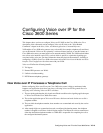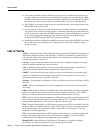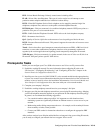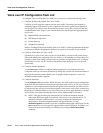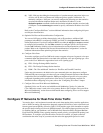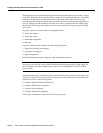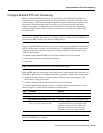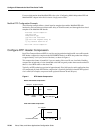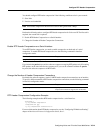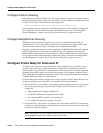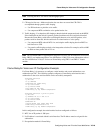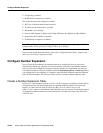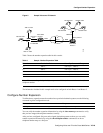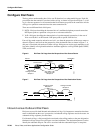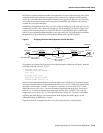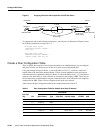
Voice over IP Configuration Task List
VC-16
Voice, Video, and Home Applications Configuration Guide
Voice over IP Configuration Task List
To configure Voice over IP on the Cisco 3600 series, you need to complete the following tasks:
1 Configure IP Networks for Real-Time Voice Traffic
Configure your IP network to support real-time voice traffic. Fine-tuning your network to
adequately support VoIP involves a series of protocols and features geared toward Quality of
Service (QoS). To configure your IP network for real-time voice traffic, you need to take into
consideration the entire scope of your network, then select and configure the appropriate QoS
tool or tools:
(a) Multilink PPP with Interleaving
(b) RTP Header Compression
(c) Custom Queuing
(d) Weighted Fair Queuing
Refer to “Configure IP Networks for Real-Time Voice Traffic” section for information about how
to select and configure the appropriate QoS tools to optimize voice traffic on your network.
2 Configure Frame Relay for Voice over IP
(Optional) If you plan to run Voice over IP over Frame Relay, you need to take certain factors
into consideration when configuring Voice over IP for it to run smoothly over Frame Relay. For
example, a public Frame Relay cloud provides no guarantees for QoS. Refer to the “Configure
Frame Relay for Voice over IP” section for information about deploying Voice over IP over
Frame Relay.
3 Configure Number Expansion
Use the num-exp command to configure number expansion if your telephone network is
configured so that you can reach a destination by dialing only a portion (an extension number) of
the full E.164 telephone number. Refer to the “Configure Number Expansion” section for
information about number expansion.
4 Configure Dial Peers
Use the dial-peer voice command to define dial peers and switch to the dial-peer configuration
mode. Each dial peer defines the characteristics associated with a call leg. A call leg is a discrete
segment of a call connection that lies between two points in the connection. An end-to-end call
is comprised of four call legs, two from the perspective of the source access server, and two from
the perspective of the destination access server. Dial peers are used to apply attributes to call legs
and to identify call origin and destination. There are two different kinds of dial peers:
(a) POTS—Dial peer describing the characteristics of a traditional telephony network
connection. POTS peers point to a particular voice port on a voice network device. To
minimally configure a POTS dial peer, you need to configure the following two
characteristics: associated telephone number and logical interface. Use the
destination-pattern command to associate a telephone number with a POTS peer. Use the
port command to associate a specific logical interface with a POTS peers. In addition, you
can specify direct inward dialing for a POTS peer by using the direct-inward-dial
command.



